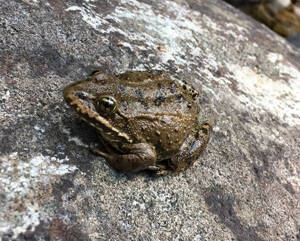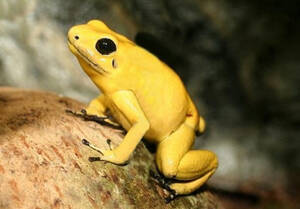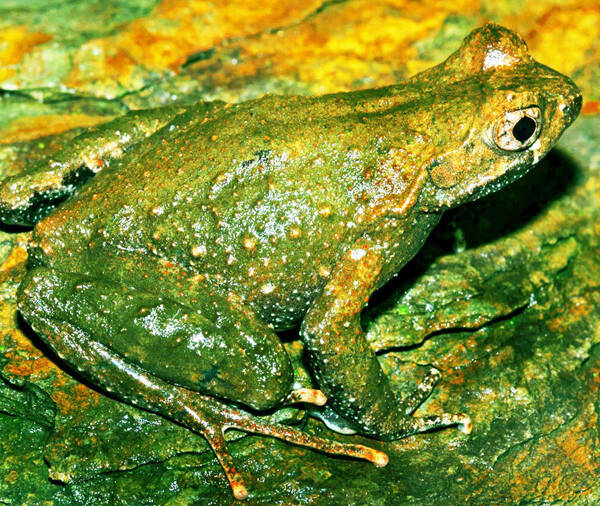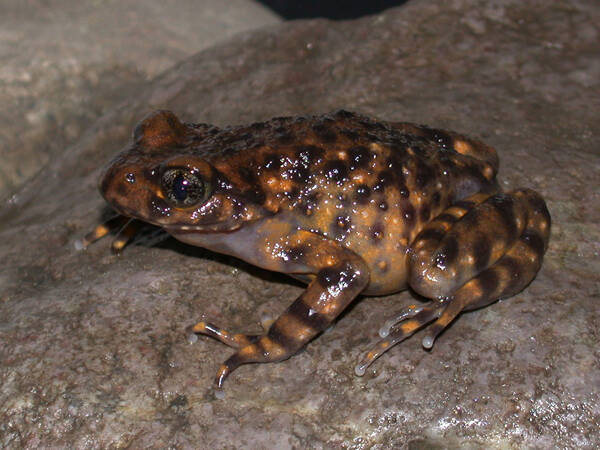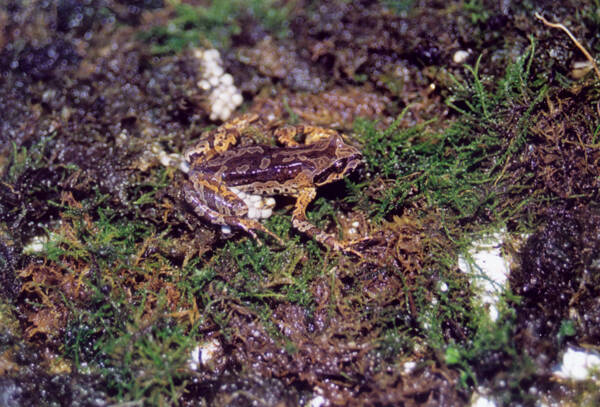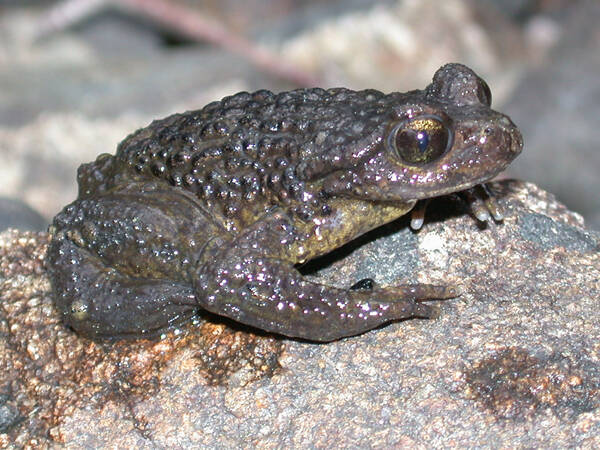Leptobrachium promustache
IUCN
LCBasic Information
Scientific classification
- name:Leptobrachium promustache
- Scientific Name:Leptobrachium promustache,Chinese horned monster, bearded frog, Chong'an bearded toad, pit goose, thunder horned monster
- Outline:Anura
- Family:Anura Ceratopus Pseudocercos
Vital signs
- length:52-62mm
- Weight:
- lifetime:
Feature
The body is small, with about 165-194 irregularly arranged black horny spines on the edge of the upper lip; the male has a single hypopharyngeal vocal sac.
Distribution and Habitat
Endemic to China, distributed in Yunnan (Dawei Mountain and Hekou, Pingbian).
Lives in mountain streams at an altitude of 1300-2100m.
Appearance
The eardrum is unclear; the upper jaw has teeth, but no vomerine teeth. The skin on the back of the head and body is covered with reticular fine skin ridges; the backs of the limbs have skin ridges. The ventral surface of the body and limbs has fine grains; the sides of the body have small white warts, and the femoral glands are unclear. The backs of the body and limbs are gray-red-brown with black spots, and there are more spots on the back and sides of the body; the sides of the head of the female toad are light reddish-brown; the upper part of the eyeball is light blue, and the lower part is black; the limbs have dark brown horizontal stripes.
Details
The original bearded toad is an amphibian in southern China. It is a species endemic to China. Compared with other toads, the tadpole period of the bearded toad is long, it is easily eaten by natural enemies, and the survival rate is low, so the original bearded toad is a rare animal in the world. During the estrus period of male bearded toads every year, 8 to 11 black keratin spines grow on the edge of the upper jaw, which is the origin of the name of the Chinese horned monster, and it is also known as "the frog with the most beards in the world."
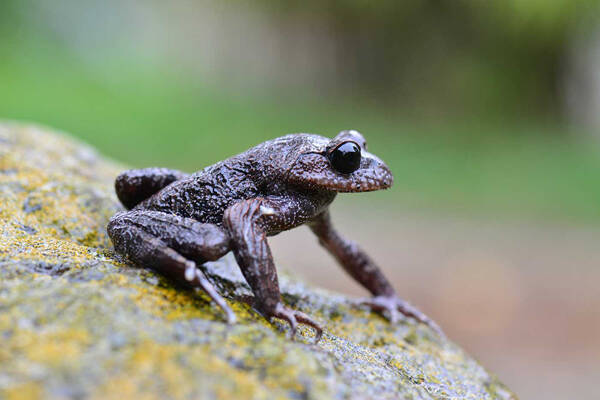
Adult toads live in lush forested mountainous areas at an altitude of 700 to 1,800 meters. They hide in rock crevices, earth holes, weeds or tree roots during the day. They come out to forage at night, and their main food is locusts, crickets, click beetles, bamboo locusts, beetles, and other agricultural and forestry pests. The tadpoles are large and sturdy, with a total length of more than 100 mm. There is generally a striking light-colored Y-shaped spot at the junction of the back and the base of the tail. The keratinous jaws are strong. It mainly feeds on algae and also eats tadpoles. It usually hides during the day and comes out at night. It takes 1 to 2 years to complete metamorphosis.
It usually does not show up easily. When it comes to courtship, it will sing in the forest streams of thousands of meters high mountains at night.
It breeds in the first and middle of November every winter (Note: Most amphibians have already entered hibernation, and this habit of the bearded toad is quite peculiar). They only mate and lay eggs in mountain streams. The eggs are grayish white and about 3.5 mm in diameter. The eggs are in clusters or rings. They float in the water and finally adhere to rocks in the water. The egg group contains 200-500 eggs. They disappear after about half a month of spawning.
The fertilized eggs hatch into tadpoles after about a month. The tadpoles also live in slow-flowing places or backwaters above 1,000 meters above sea level. The total length can reach 91 mm, of which the head and body are about 31 mm long. The back of the tadpole is dark brown, the tail is gray-brown with dark spots, and there is a light "Y"-shaped spot at the junction of the body and tail. Tadpoles hide in the cracks of rocks during the day and feed on mosses and algae at night. Tadpoles need to hibernate twice and metamorphose into young toads after about 3 years. The tadpole period of the bearded toad is long, and it is easy to be eaten by natural enemies, so the survival rate is low.
The original genus of bearded toad is endemic to China, with 5 species:
① Emei bearded toad, with 5 to 8 horny spines on each side of the upper lip;
② Chong'an bearded toad, with 1 on each side, produced in Wuyi Mountain, Fujian;
③ Leishan bearded toad, with 2 on each side, without vocal sac, produced in Leishan, Guizhou;
<p style="text-indent: 2em; text-align: ④Yaoshan Bearded Toad, with 2 pieces on each side, with vocal sac, found in Yaoshan, Guangxi, Hunan and Zhejiang, etc.
⑤Ailao Bearded Toad, with 10 to 16 pieces on each side; found in Yunnan.
The ecological environment quality of the original bearded toad habitat has declined, and its population is very small.
It is listed in the second level of the "List of National Key Protected Wildlife in China".



